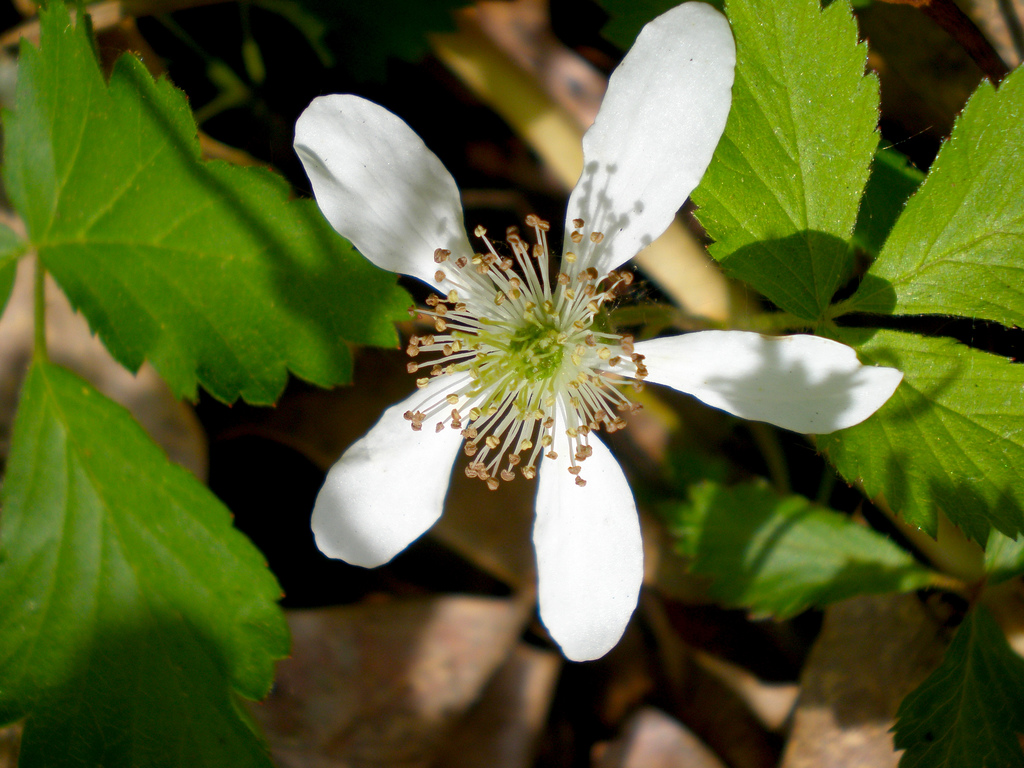Raspberry (Rubus idaeus)
Flower biology
- The raspberry flower is hermaphroditic and self-pollinating.
- It produces nectar as well as pollen.
- The fruit is compound. Each individual fruit has its own pistil and must be pollinated separately. The flower ripens (i.e. the pistils become receptive) ring by ring, starting from the base. This takes several days, during which time several bumble bee visits are required for a well-formed fruit to develop.
- Cross-pollination plays a more important role than does self-pollination.
- The quantity of pollen on the stamens indicates to what extent the flower has been visited by bumble bees: bare stamens signify adequate visits.
- A shortage of flowers may lead to bumble bees "over visiting" the available flowers. In their attempts to take the last pollen grains from the flowers, the bumble bees fasten their jaws onto the receptacle and set the flower into vibration by activating their flight muscles (without making flight movements with their wings). This is called buzz pollination. The result will be damage to the receptacle, which manifests itself later as cork-like spots on the walls of the fruits.

Introduction schedule
For pollination of raspberry in outdoor crops 6-9 LARGE colonies per hectare are necessary if no other pollinators are present.
On delivery, one LARGE colony consists of 80-110 worker bees and has a life expectancy of 4-6 weeks.
Instructions for use
- Colonies should be introduced when the first flowers are open.
- Colonies should be placed on a sturdy support, about 50 cm above the ground; in spring in a sunny place, and later in the season in the shade.
- Secure the hive so that ants cannot enter it.
- After placement of the hive, let the bumble bees settle down for a while (½ - 1 hour) before opening the flight hole.
- Following their initial orientation flights the bumble bees will immediately start pollinating the crop.
- Bumble bees are active at temperatures between 10 and 30 degrees Celsius. They function best at temperatures between 15 and 25 degrees Celsius.
Crop protection
- Combining the use of bumble bees with natural enemies does not present any problems.
- Agricultural chemicals may have direct or indirect effects on the bumble bees. Direct effects occur when worker bees and larvae die as a result of contact with or digestion of a chemical product, indirect effects occur when the smell of the treated flower puts off the bumble bees, causing visits to stop.
- Systemic pesticides (pesticides that are absorbed through the roots) often have a long-lasting residual effect. If a flower produces nectar in addition to pollen (e.g. sweet pepper), the damage to the bumble bee population may be much more serious than in a crop that only produces pollen (e.g. tomato).
- You will find detailed information about persistence and compatibility of pesticides with bumblebees and most other beneficials in Zonda's Side Effects Guide or online at Koppert’s website: www.koppert.nl
- In all cases the BEEHOME option of the hive must be activated before the crop is treated. This option ensures that bumble bees can enter, but not leave the hive. After about an hour the hive can be closed completely, so that it can either be covered or removed from the crop.
- If the hive is temporarily removed from the crop, it should be stored at 18 to 20 degrees Celsius.
Need more help with our product?
Please call us on 0800 496 632